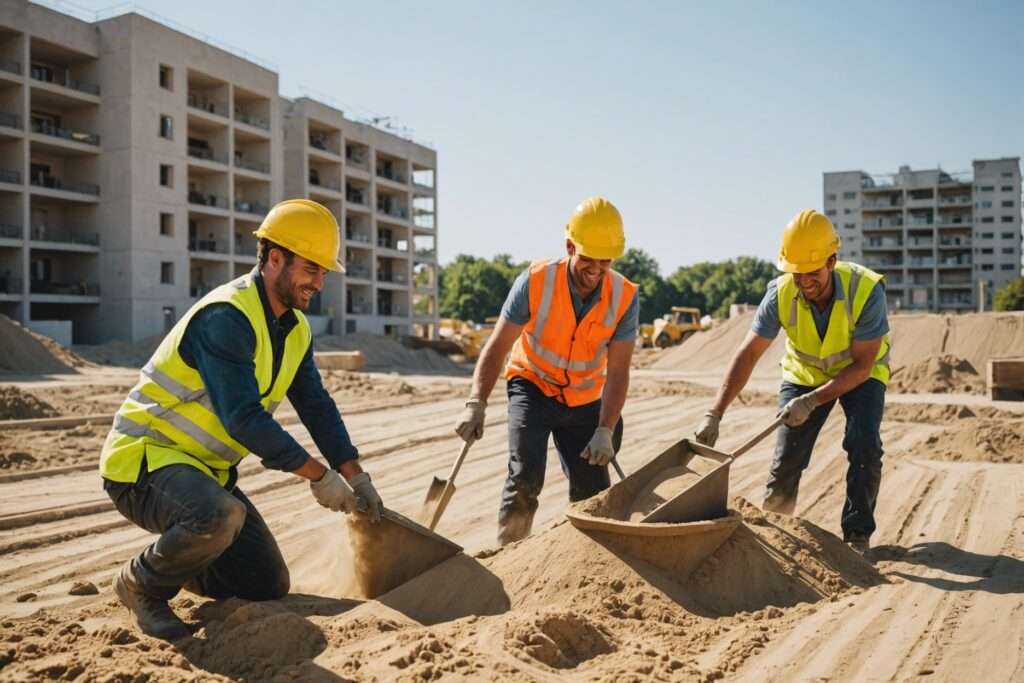
Yearly Sand Filling: Is it Necessary?
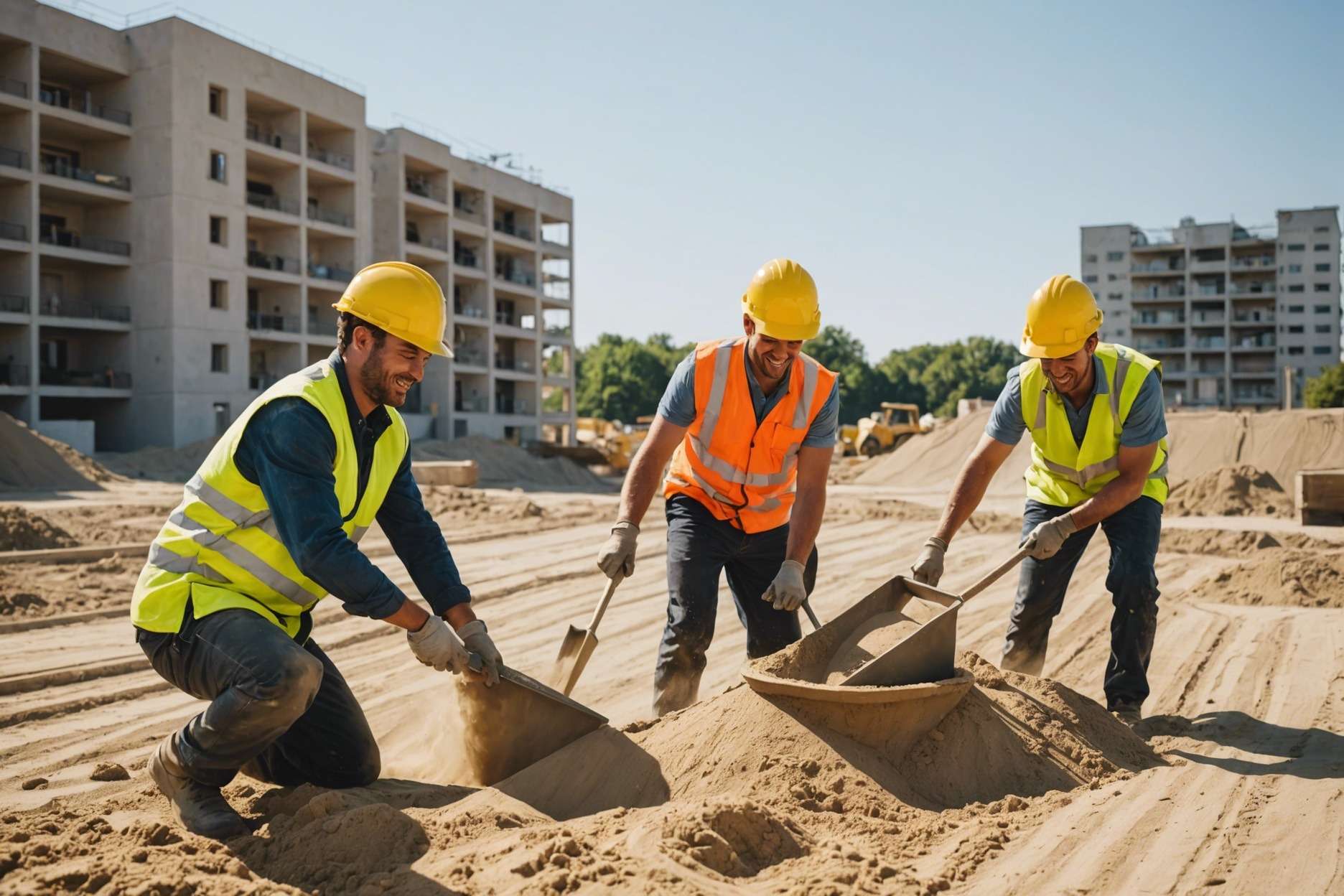
Yearly sand filling is not always necessary if the initial sanding was done properly with high-quality materials and under suitable environmental conditions. However, areas experiencing heavy rain or high traffic might benefit from more frequent maintenance to prevent erosion and maintain structural integrity.
Introduction to Sand Filling Between Pavers
Sand filling between pavers, particularly using polymeric sand, plays a key role in the stability and aesthetics of patio and walkway projects. Here’s why it’s beneficial:
- Purpose of Polymeric Sand: It fills the joints between pavers, acting like grout to bond and seal these spaces. This prevents weed growth and ant infestations, enhancing both the function and look of the paved area.
- Durability: Polymeric sand contains special polymers that are activated by water. Once set, it creates a durable bond that can last between 10 to 15 years, reducing the need for frequent replacements.
- Installation Tips:
- Ensure pavers are clean to avoid discoloration.
- Spread the sand evenly, then sweep into the gaps.
- Use a vibratory tamper for compact filling.
- Apply water to activate the bonding process.
- Weather Considerations: It’s vital to check the weather before application. Rain can wash away the sand before it sets, so a dry forecast is crucial.
- Alternatives to Polymeric Sand:
- Silica sand and stone dust are suitable for holding pavers in place.
- Cement offers a permanent solution but doesn’t allow for drainage.
- Builder’s sand is economical but may erode over time, requiring more frequent applications.
Avoid layering new polymeric sand over old layers as the base might be dirty or compromised, affecting the new layer’s effectiveness. If removal is necessary, use a pressure washer for the old sand and white vinegar to clean the paver surfaces.
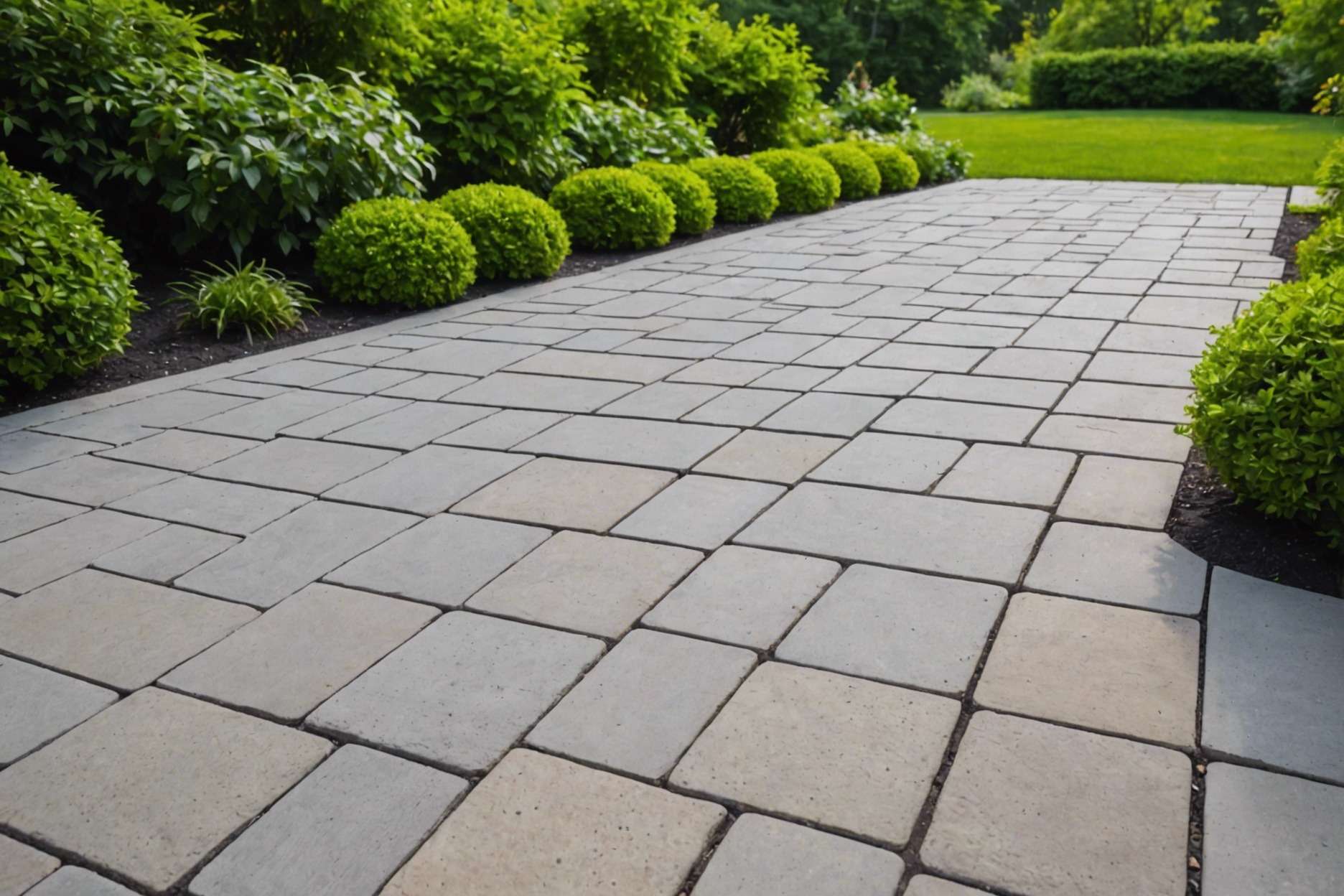
The Role of Sand in Paver Installation
Sand plays a pivotal role in the installation of pavers, ensuring durability and visual appeal. Here’s how different sands contribute to successful paver projects:
- Coarse Sand: Ideal for the base layer; its large particles interlock to stabilize pavers and promote drainage.
- Polymeric Sand: Used for the joints between pavers; hardens upon contact with water to prevent erosion and block weed growth.
- Bedding Sand: Ensures a smooth, level surface beneath pavers, crucial for even placement and structural integrity.
- Washed Concrete Sand: Its coarseness helps in creating a solid foundation, essential for effective water drainage.
- Mason’s Sand: Fine particles fill paver joints tightly, enhancing interlock and stability.
- Joint Sand: Prevents water seepage under pavers by securing them in place.
When installing pavers, consider these factors:
- Sand Type: Choose based on the specific needs of your project, like durability or resistance to weather conditions.
- Installation Techniques: Proper screeding of sand ensures a flat, even base. Avoid walking on screeded sand to maintain levelness.
Regular maintenance ensures longevity and preserves the appearance of your paver installation. Properly selected and installed sand keeps your paver surfaces stable and attractive for years.
Reasons for Yearly Sand Filling
- Yearly sand filling between pavers is recommended to enhance their stability and longevity. Sand plays a crucial role in stabilizing pavers, preventing them from shifting and sinking. It also ensures a level surface and locks the pavers together to create a durable foundation.
- The right type of sand is vital for effective filling. Fine sand is preferred because it fills gaps well and binds the pavers together. However, it shouldn’t be so fine that it washes away easily. Preparing the pavers by cleaning and leveling them before applying sand is essential for the best results.
- After applying sand, sealing the pavers can protect them from weathering and staining. Polymeric sand, which contains polymers, is an excellent choice as it binds the pavers strongly, hardens when wet, and resists washing away. This type of sand also prevents weed growth and insect infestation.
- Regular maintenance, including cleaning, re-sanding, and sealing, is necessary to keep the pavers in good condition. Polymeric sand should be compacted and given time to set properly before the pavers are used, usually taking at least 24 hours to harden.
- Consider professional help for applying sand and sealant. This ensures that the right materials and techniques are used, potentially saving costs in the long run due to the durability and reduced need for frequent replacements.
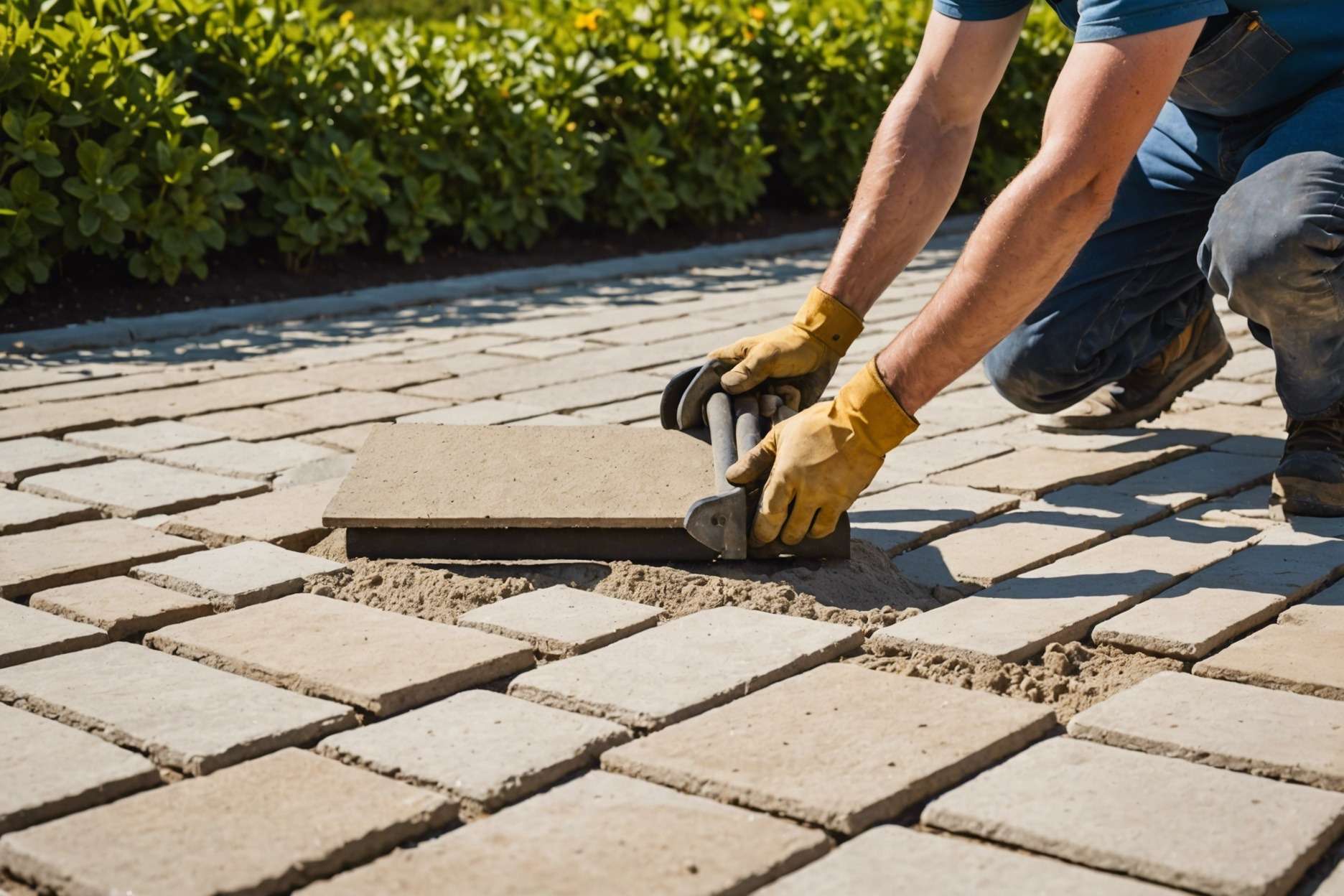
Is Yearly Sand Filling Necessary?
When deciding if yearly sand filling is necessary after an initial proper sanding, consider the following:
- Initial Quality and Application: If the initial sanding was done correctly using clean, high-quality sand without excess clay or silt, it might reduce the need for frequent refills.
- Material Characteristics: Different materials settle differently. Fine-graded soils and sands with low to medium plasticity are less likely to shift, reducing the need for yearly refills.
- Environmental Factors: Areas with high water flow or heavy rains might require more frequent maintenance to combat erosion or settling.
- Usage and Load: High-traffic areas may need more frequent sand filling to maintain level surfaces and structural integrity.
For alternative maintenance tips:
- Regular Inspections: Regularly check for signs of settling or erosion and address them promptly.
- Proper Drainage: Ensure good drainage to prevent water from pooling and causing the sand to shift.
- Quality Materials: Use only high-quality fill materials to prolong the lifespan of your sand-filled areas.
For more detailed service offerings, visit our Pavers Service Page.
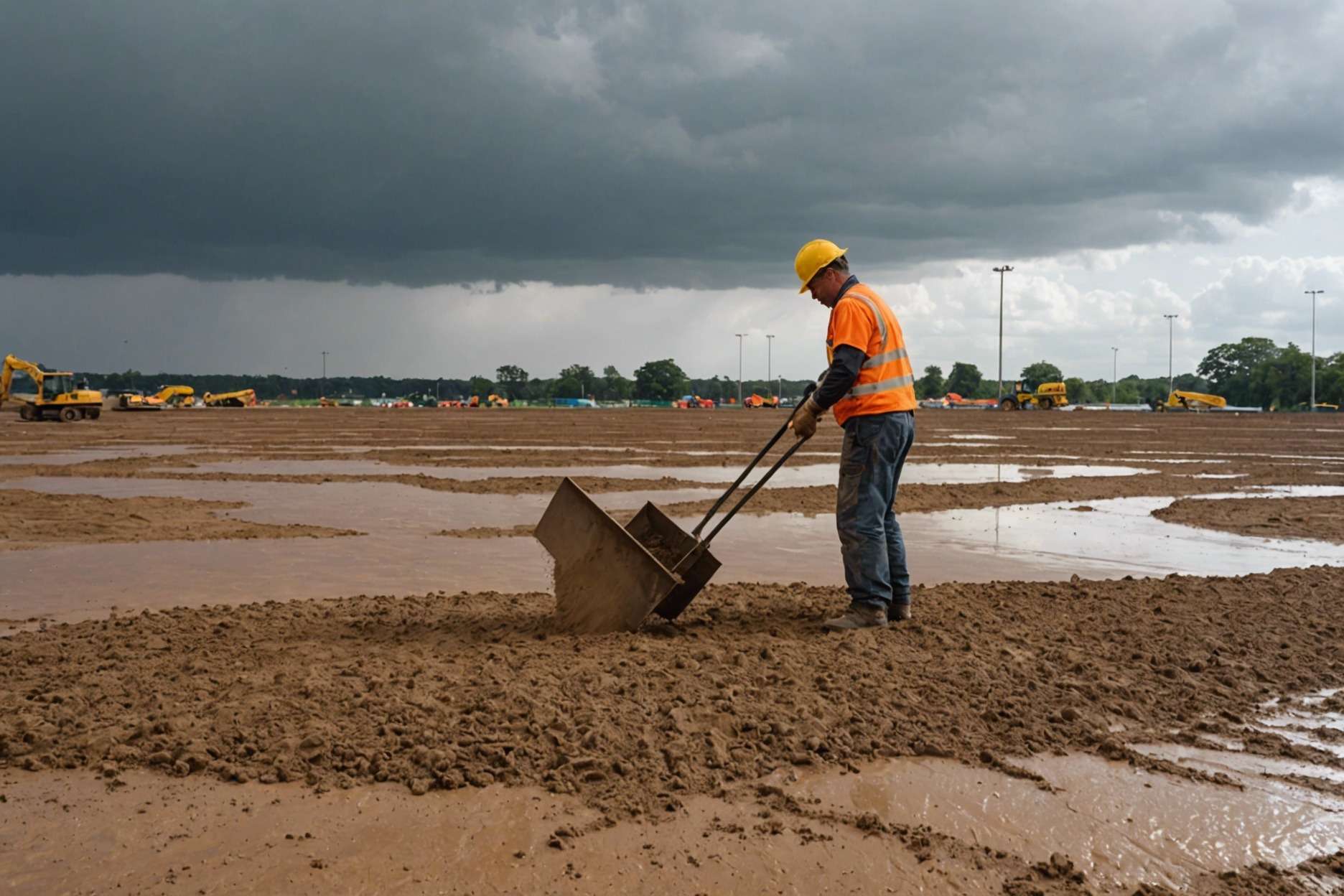
FAQ
What is the purpose of using polymeric sand between pavers?
Polymeric sand serves to fill the joints between pavers, functioning similarly to grout. It not only enhances the structural integrity and appearance by bonding and sealing these spaces but also prevents undesirable elements like weed growth and ant infestations.
How long does polymeric sand last?
Polymeric sand contains special polymers activated by water, creating a durable bond that typically lasts between 10 to 15 years. This reduces the need for frequent replacements.
What are some tips for installing polymeric sand effectively?
For optimal installation of polymeric sand:
– Ensure the pavers are clean to prevent discoloration. – Spread the sand evenly, then sweep it into the joints. – Use a vibratory tamper to compact the sand adequately. – Finally, apply water to activate the polymers, binding the sand firmly.
What weather conditions are ideal for applying polymeric sand?
It is crucial to check for a dry weather forecast before applying polymeric sand, as rain can wash the sand away before it sets.
What are some alternatives to polymeric sand?
Alternatives include:
– Silica sand or stone dust, suitable for holding pavers in place. – Cement for a more permanent fixture, though it inhibits drainage. – Builder’s sand, which is more economical but may erode over time, necessitating more frequent applications.
How should old polymeric sand be removed if re-sanding is necessary?
When re-sanding, it’s important to first remove any old polymeric sand to avoid issues with the new layer’s effectiveness. This can be done using a pressure washer for the sand and white vinegar to clean the paver surfaces.
Why is yearly sand filling recommended?
Yearly sand filling is advised to maintain the stability and longevity of pavers. This process helps in preventing pavers from shifting, sinking, and ensures they remain level and strongly interlocked.
What type of sand should be used for filling, and why?
Fine sand is generally recommended because it fills gaps effectively and binds the pavers together, offering a solid, durable foundation. However, it should not be so fine that it is prone to being washed away easily.
Is it necessary to seal pavers after applying sand?
After applying sand, sealing the pavers is a beneficial step that protects them from weather elements and staining. This is particularly advantageous when using polymeric sand as it enhances the bond, and prevents weed growth and insect infestations.
How long should you wait before using pavers after filling them with polymeric sand?
It is usually recommended to give polymeric sand at least 24 hours to set and harden properly before the pavers are used.
Under what conditions might yearly sand filling be unnecessary?
Yearly sand filling might not be necessary if:
– The initial sand application was done properly using clean, high-quality sand. – The used materials naturally settle less or compact well. – The local environment does not subject the area to high water flows or heavy rains that can lead to erosion.
What maintenance tips can prolong the lifespan of sand-filled paver areas?
For maintenance:
– Regular inspections should be conducted to check for settling or erosion and address them promptly. – Maintain good drainage to prevent water accumulation that might shift the sand. – Use only high-quality fill materials to ensure durability and minimize the need for frequent replacements.
